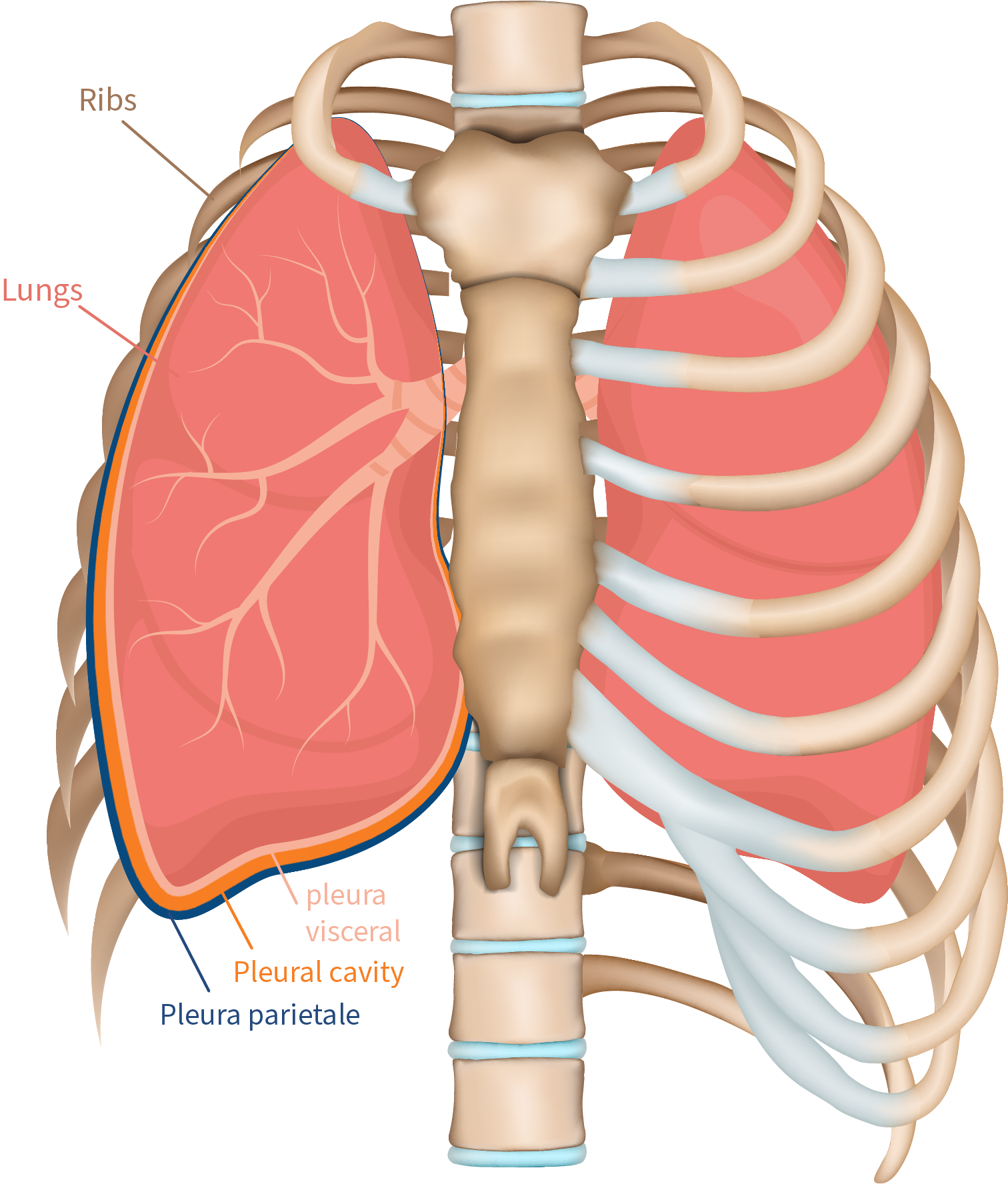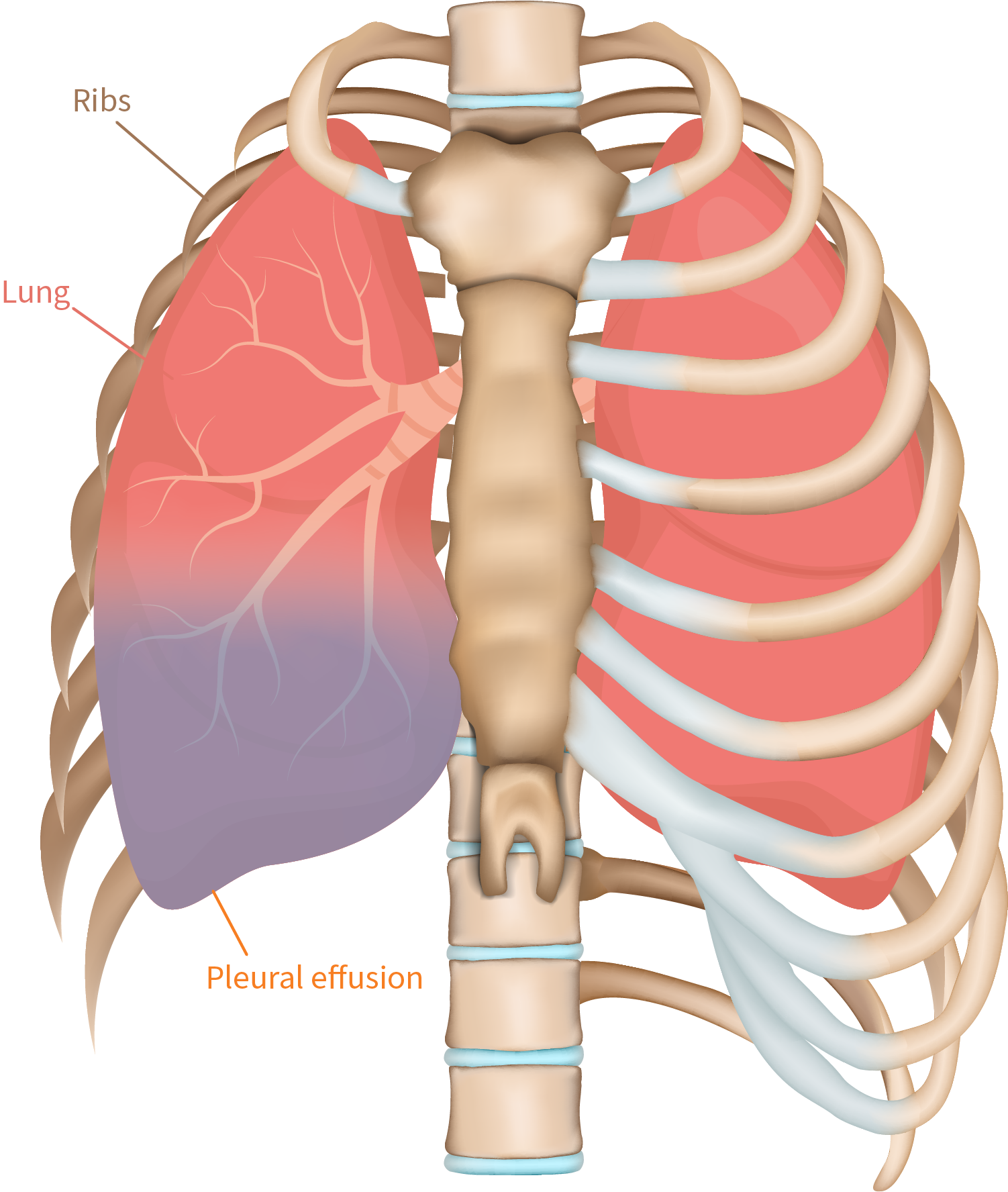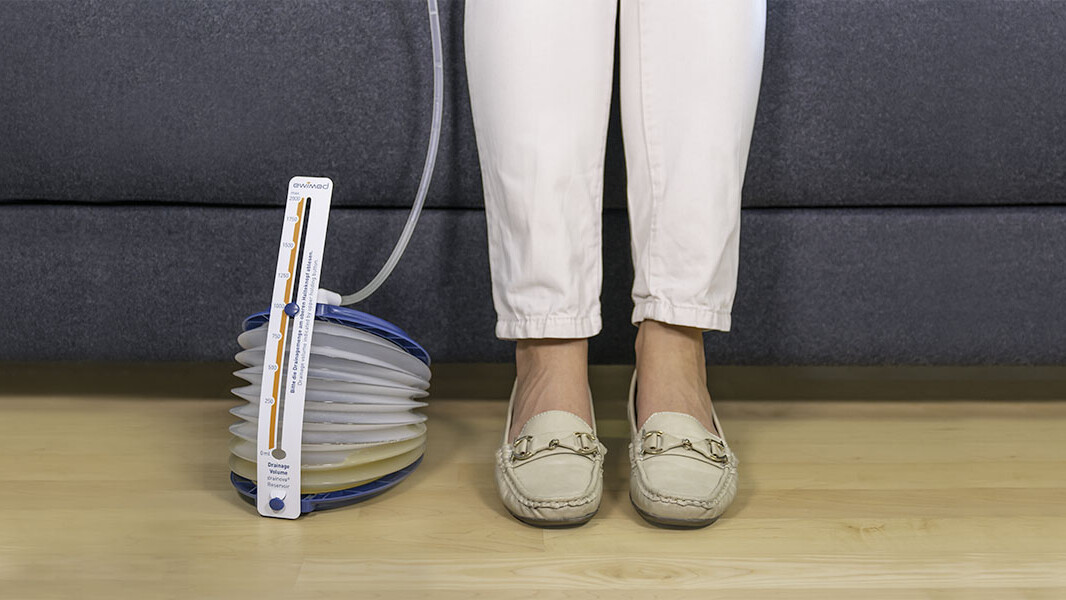Pleural effusion / water in the lungs
Explained in an understandable way!
SHORT & CUTTLE
Most common causes of pleural effusion
- Cancer
- Heart failure
- Pneumonia
Symptoms of pleural effusion
- Shortness of breath
- Pain / feeling of pressure in the area of the chest
- Cough
Synonyms for Pleural Effusion
- Water in the lungs
- Water accumulation around the lungs
- Accumulation of water in the lungs
Treatment of pleural effusion
- Puncture
- Pleurodesis (talc/VATS)
- Pleural catheter for drainage
The pleura (pleura)
The pleura (pleura ) is a thin, two-bladed skin in the chest. The inner skin covers the lung surface and is called the pleura visceralis. The outer skin, the pleura parietalis, lines the inner surface of the rib cage. Between them is the pleural space. This gap is filled with a few mililiters of fluid, so that the pleura and pleura stick together during all breathing movements – comparable to two panes of glass with a film of fluid between them.

You are currently viewing a placeholder content from Default. To access the actual content, click the button below. Please note that doing so will share data with third-party providers.
More InformationWhat is a pleural effusion?
Pleural effusion is an accumulation of fluid in the pleural space (chest cavity) described above that is greater than normal (not to be confused with pulmonary edema, in which fluid builds up within the lungs). In a healthy person, a few milliliters in the pleural space ensure that both pleural sheets can be moved without pain.
In a person suffering from pleural effusion, fluid collects between the inner wall of the chest and the lungs. The effusion impairs breathing above a certain amount, as the lungs can no longer expand fully due to the fluid.
What causes pleural effusion?
The underlying diseases can be manifold. In a long list of diseases, the most common cause of pleural effusion is cancer (malignancy), heart failure (heart failure), or pneumonia (pneumonia). Lung carcinoma, followed by breast carcinoma, is again the most common cause of malignant pleural effusion. You can find more explanatory videos about this in our media library.

Draining is very easy with the drainage system. I had to go to the emergency room 2 times before and be punctured, that is no longer necessary. I really panicked every time I ran out of air.
– Mr. B. from Sachsenhausen / Pleural effusion –
How is pleural effusion treated?
Several treatment options are available to treat pleural effusion:
Pleural puncture
During pleural puncture, the accumulated fluid is withdrawn through a cannula with a syringe. This is an outpatient procedure that is often performed in the clinic outpatient department. As soon as the fluid forms again, another puncture must be performed in the clinic outpatient department.
Pleurodesis
Recurrent (recurrent) effusions can be prevented by pleurodesis (intentional adhesion of the lung leaflets), depending on the underlying disease and type of effusion. One method of treatment is talc pleurodesis in the course of video-assisted thoracoscopy (VATS).
Permanent drainage
However, at ewimed, we recommend immediate placement of a pleural catheter for drainage in cases of recurrent effusions – right from the start to increase the possibility of pleurodesis.
A permanently placed catheter has the advantage for the patient that he or she does not have to repeatedly visit the clinic outpatient department or the physician to be punctured. Pleurodesis is also often possible by draining the pleural effusion. The patient thus has more time available, as the drainage can be performed at home without the presence of a physician, thus increasing mobility as well as quality of life again.
Other advantages of a permanent catheter include shorter hospital stays, a reduced risk of infection, and a very low complication rate.
Also read here:
“How one little intervention can change everything!”

The advantages of ewimed drainage systems at a glance:
- independent, fast and safe drainage possible at home
- No further hospitalizations
- Simple and intuitive handling
- no repeated, painful punctures
- one-time, minimally invasive procedure for implantation of the catheter
- highest safety standards due to key-lock principle of the catheter with reservoir
- Increased mobility and independence for you as a patient
- Reduction of the risk of infection
- high rate of spontaneous pleurodesis in pleural effusions without separate surgery
Important note
Also, since 2018, the European and American medical societies of thoracic surgery and pneumology have recommended implantation of a tunneled permanent pleural catheter for drainage in cases of recurrent effusions to increase the possibility of pleurodesis (adhesion of the pleural space) (Sources: Europe USA)
Do you have any questions?
Contact us now or find a selection of frequently asked questions from patients here.

